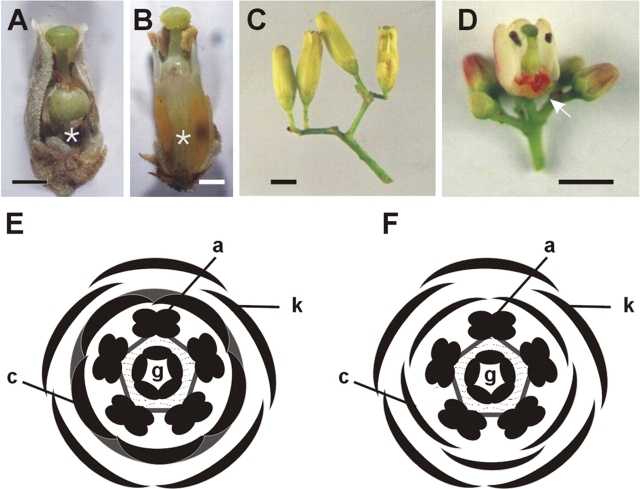Fig. 2.
Floral structure in Cedreleae: C. fissilis, C. odorata and Toona ciliata. (A, B) C. fissilis partially dissected functionally female (A) and male (B) flowers. The asterisks in (A) and (B) indicate the cushion-shaped structure at the base of the gynoecium. (C) Cymule of C. odorata with flowers before anthesis. The partially dissected flower (right) is functionally male. (D) Cymule of Toona ciliata with mature flower buds. The partially dissected flower is functionally female. The arrow points to the nectary. In (A–D), the perianth, as well as the staminal tube were partially removed to reveal the reproductive organs. (E, F) Floral diagrams of Cedrela (E) and Toona (F). k, sepals; c, petals; a, stamens; g, carpels. The grey area connecting the petals (E) indicate synpetally. The grey pentagon connecting the stamens indicate that they are fused at the base of the filaments (E, F). The dotted area between the third and fourth whorls indicates adnation of the base of stamen filaments with the base of the gynoecium (E, F). Scale bars = 2 mm.

